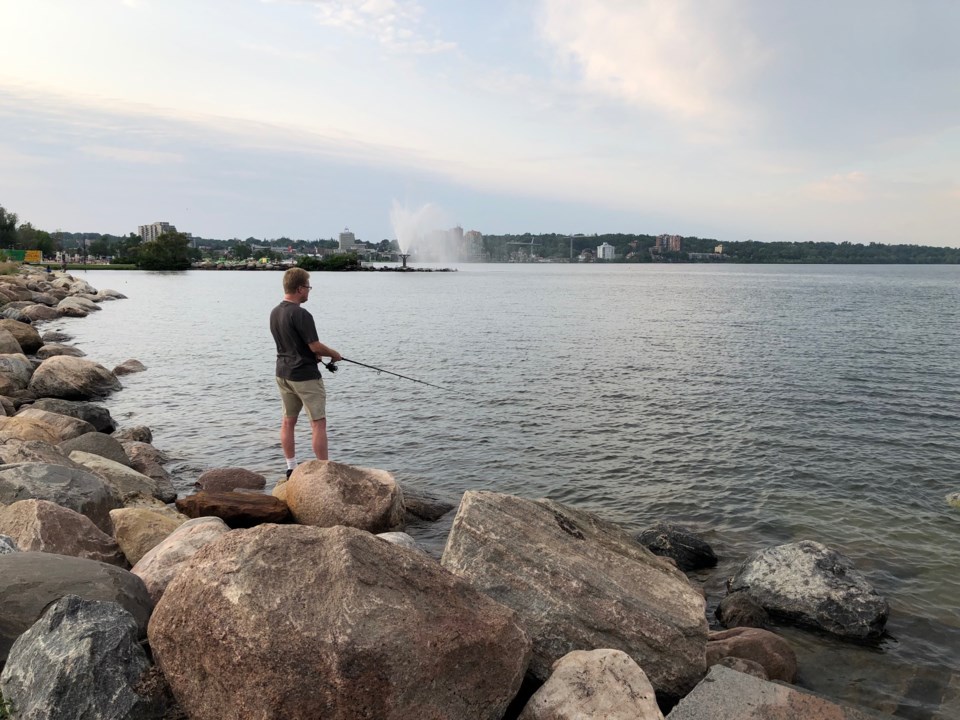Lake Simcoe is truly the jewel in the region's crown and much loved by the citizenry.
Citizen groups patrol the shore to collect the accumulated garbage. Other groups alert us to the dangers of phosphates, which encourage the growth of weeds and algal blooms.
Of course, governments promise to clean up the lake, but usually limit their clean-up to targeting the urban sewage treatment plants, which are often blamed for the problem.
However, there is another pollutant which goes largely unnoticed and is gradually accumulating in our lake — common salt, or sodium chloride.
Chloride concentration, the usual way to measure sodium chloride in the environment, has been tracked by the Lake Simcoe Region Conservation Authority for a half-century.
In 1970, the chloride concentration in our lake was 10 milligrams per litre (mg/l). By 2020, it was more than five times higher.
Why should we care? In simple terms, salt is toxic. But that is a silly statement, because everything is toxic if the dose is high enough. To put it into perspective, if ingested, common table salt is about twice as toxic as diesel fuel.
As far as aquatic life is concerned, very few fish making their homes in fresh water could tolerate even 15 minutes in sea water. Eels and some salmon species are on this short list.
Sadly, in another 50 years, Lake Simcoe will become toxic to a number of its resident species.
How did that happen? Well, we have been spreading salt on our roadways to help clear winter snow for half a century. The 10 mg/l chloride concentration Lake Simcoe had in 1970 is normal for Ontario lakes and streams which are far from roads and industry, what rain has been dissolving from our rocks and soils for thousands of years.
When we began to salt roads, this is eventually rinsed into our streams and lakes by rainfall and melting snow. In fact, Hotchkiss Creek, located near the Barrie sewage treatment plant o Bradford Street, is one of the saltiest streams in Ontario. Its chloride concentration reaches 6,000 mg/l during the spring runoff, 30 per cent of the salinity of the sea.
According to Environment Canada, the short-term toxic concentration of chloride is 640 mg/l. This is the concentration that begins to kill freshwater plants and animals if they are exposed for 24 hours.
Virtually all the streams in the Lake Simcoe watershed draining urban and suburban areas exceed this concentration in the spring, killing certain species. That, of course, impacts the biodiversity in and around these streams.
Is this spreading of salt even necessary? Well, governments rarely react rapidly. However, Ontario governments seem strangely slow to recognize the revolution in snow-tire technology.
At least two decades ago, “winter tires” began to appear on the market. Instead of aggressive, knobbly treads, they had a multitude of tiny grooves, or "sipes." Not visible was their revolutionary rubber compound.
Traditional tire rubber is “hydrophobic,” or water hating. Water droplets are repelled by old-style rubber.
The rubber in winter tires has been chemically altered to be “hydrophilic," or water loving. Water is attracted to this rubber and sticks to it.
Why does this matter? Tires with hydrophilic rubber treads, patterned with many tiny sipes have truly astonishing ice and snow grip. While they are not quite as good as the studded tires my cars wore a half-century ago, they are so good that, if studded tires were legal in southern Ontario today, I would not choose them over quality winter tires.
Barrie drivers seem to have noticed. Two decades ago, few cars had winter tires. I clearly remember overtaking a four-wheel-drive Jeep struggling crab-wise up a snow-covered Anne Street. He must have thought 4WD was enough, but he would have been embarrassed to be passed by a two-wheel-drive Volkswagen Golf.
With most drivers now using winter tires with excellent grip on snow and good grip on ice, why do we still salt our streets? That is down to Ontario’s provincial government regulations, which require all roads cleared to blacktop a certain number of hours after a snow fall stops, depending on the road’s classification.
There's no way to clear snow from a road thoroughly enough to reveal the black surface without using salt.
And it gets worse.
The City of Barrie often drizzles a strong brine solution on our roads before a snowfall. When the snow begins to fall, a little melts, forming a thin layer of salty water. Snow accumulates above this skin of salty water.
When the snowplow passes later, this snow is easily removed because it doesn’t stick to the road surface. Unfortunately, snow not sticking to the road surface has an unfortunate side-effect. When you drive over this fresh snow, you do not know if the roadway had been pre-salted.
If brine was applied, you will know when you try to brake. You may have the best winter tires available, but all they can do is grip the snow. The pad of snow under your tires isn’t gripping the road and you may slide helplessly.
Until that road is plowed, it's a well-disguised skating rink and definitely unsafe, particularly on long steep hills like Sunnidale Road, Essa Road or Anne Street with traffic lights at the bottom of the hill.
Remember, whatever the authorities tell you, they are not applying salt to the roads for our safety. They are salting the roads to satisfy a provincial winter maintenance regulation, one they cannot satisfy without using salt.
Peter Bursztyn is open to local environmental ideas to look into. If there's something you want to know about, email us at [email protected].
